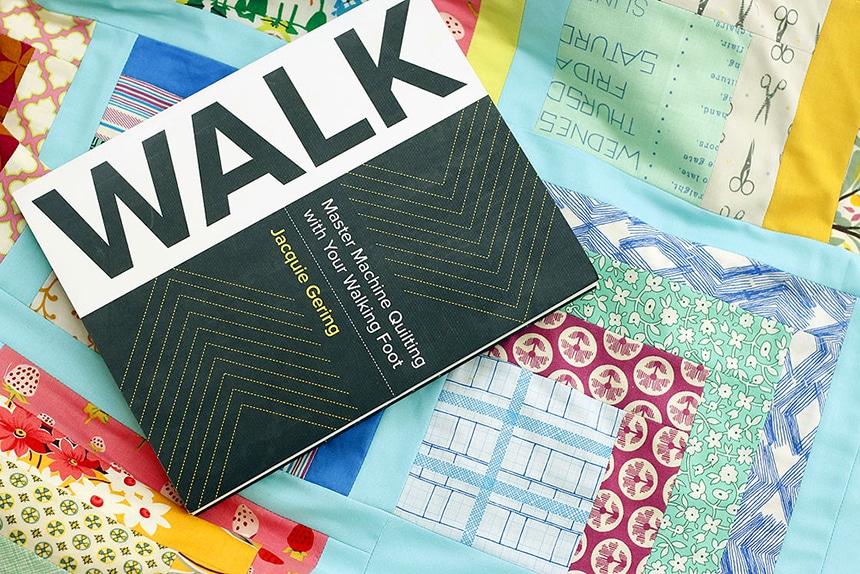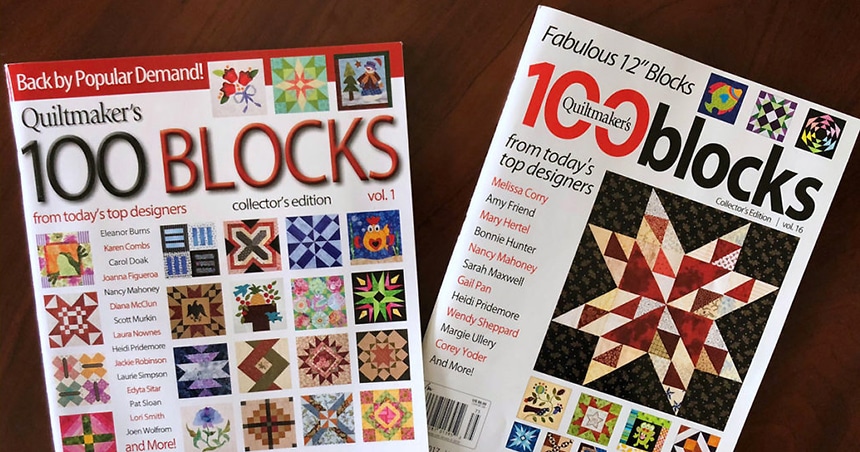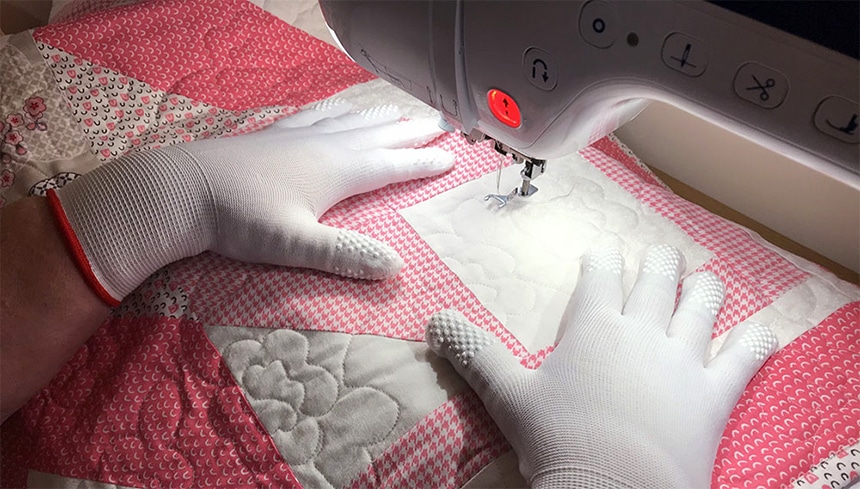

The practice and hobby of creating quilts, especially for beginners, need inspiration. And for those knowledgeable in the craft, adding theoretical knowledge to the practical knowledge you have is the only way to being a pro. In the words of Charles Elliot, books are the “most patient of teachers.” So accessible, they are the “wisest of counselors.”
Comprehensive, but not too bulky, quilting books helps you open the seemingly hard-to-access world of quilting. So, which is best for your experience level? In this literature buying guide, we have handpicked 7 of the best quilting books for starters, intermediate and advanced quilters. The collection of quilting books here include the best for precut ideas, longarm quilting method, 2-1/2″ strips, and machine methods. In choosing these books, we looked at criteria such as the publishing company and the author. We also looked at the number of pages, the type of book, and the experience level they are suitable for. These are foolproof criteria that’ll ensure you get not only the best book but the best quilting book written for you.
The Complete Guide to Quilting is a very informative guidebook for all quilters and hobbyists. Great for absolute beginners as well as pros, the book includes photo guides and instructions for all experience levels.
Only available in paperback, the quilting guide has 352 colorful pages filled with texts, illustrations, and instructions. Although it doesn’t contain any pattern, it offers valuable troubleshooting advice that’ll make your quilting journey enjoyable and easier. It lets you tackle virtually all projects with great confidence. Answering every possible question, it is like an encyclopedia of quilt-making for all beginners and the intermediate class.
Featuring 1,000 block designs and texts in a 528-page paperback, this is one of the most informative quilt books. Coming at a great price, it features ideas from the finest creative art designers of today. It is a great place to find block designs ranging from traditional, innovative, sophisticated, unique, classic, to the whimsical.
It covers all block making approaches, including pieced, mixed, foundation-pieced, and applique techniques. For ease of reference, the book comes with a compact disc loaded with PDF templates. In addition, it features yardages and features you can use to turn your blocks to beautiful quilts.
One of the best quilting books for beginners, the Made Modern provides ideas on how to bend the rules with great improvisation that brings originality. You don’t have to work from paper patterns and set out cutting measurements. This book teaches readers how to piece fabrics to small and manageable blocks. It stimulates creativity as it lets you directly quilt on the block and not the entire quilt. You can quilt in small and structured stitches, as well as on large zigzags.
The book gives a thorough introduction that gives a clear understanding of the differences between traditional and modern methods. The method combines quilting and patchwork together as most of the work is done in limited areas.
Authored by creative art professional and quilting teacher, Jacquie Gering, this quilting book is suitable for machine-quilting starters and pros. The Walk is a guide for everyone who wishes to machine-quilt with their walking feet. The author shares an in-depth guide to the basics of the art. He gives a solid foundation for quilters looking to practice with ease and douse of creativity.
She also guides readers through several test-drives with their walking foot. She offers tips on getting acquainted with the features of the machine and setting up for a successful practice.
The Rulerwork Quilting Idea Book is a comprehensive 192-page quilting book by Amanda Murphy. Available both in paperback and in Kindle, this idea book features 59 designs. One of the best longarm quilting books for traditional and modern users, the quilt book also features tips for domestic machines.
In the book, the author begins with tips on using the basic shapes with the quilting machine. These help to lay or reinforce your foundation as a starting quilter. Then, this moves on to the presentation of 59 different quilting designs. The book ends up with the author’s suggestions on filling background spaces with a free-motion quilt technique.
Need some pre-cut ideas? The Quilter’s Precut Companion is one of the best quilt books for pre-cut quilting. The 32-page book is the brainwork of Jenny Doan, a quilting professional from a Hamilton-based company, the Missouri Star Quilt. The handy book offers a complete guide on working with Charm Packs, Turnovers, Jelly Rolls, Layer Cakes, and more!
It teaches you how to see up to 25 traditional-style blocks from pre-cut strips, squares, and triangles. It features amazing tricks and tips all from the Missouri quilting company.
Perfect for beginners, it covers all the elements of pre-cuts, including needle types, standard sizes, and pre-cut options. Finally, it features charts, illustrations, and tables that are easy to use.
This sparkling All-Stars book packs irresistible ideas on Jelly Rolls. Coordinating 2-1/2″ fabric strips, it slashes the time for cutting and speeds up the sewing time. The patchwork book features 14 patterns for quilting. These were created by renowned Moda designers such as Lisa Bongean, Joanna Figueroa, Betsy Chutchian, Anne Sutton, and Sandy Klop. The book features quilt patterns from the classic and simple to the fresh and the contemporary. The On a Roll quilting book, indeed, will help you set your ball rolling!
Here, you’ll find a guide that will walk you through the process of quilt book purchasing. We have here some of the features we considered before making our selections, which you should also watch out for. Also included in this section are useful tips and answers to frequently asked questions.

From the type of book, publisher, pages to other informative tips, here are features to consider when choosing your quilting books.
The world of quilting is very vast. So, specialization is key. There are as many types of quilting books as there are types of quilting techniques. There are general interest and in-depth quilting books such as The Complete Guide to Quilting from Better Homes and Gardens. However, there are also special interest ones. So, whether longarm or machine quilting, traditional or modern, there are types of books for every niche.
Prospective readers often fall in love with the book on the first knowledge of a renowned author or publisher. Do you already know a particular writer and you like his or her work? Then the question of quality and satisfaction should not arise. But what if the author isn’t known to you? The best solution is to do a research.
When choosing a book, check for yourself, for example, if the author has had good reviews or if he has received a particular award. The reputation of a book or an author can be a good indication of its quality.
Some authors and publishers are traditionally known for excellence. For example, Moda and Quiltmaker Magazine are renowned for quality. So, knowing if a book is the right one is beyond checking out the descriptions. Publishing houses often have their own editorial line. This is undoubtedly more obvious for small independent publishing houses. But it is also the case for large publishing houses. They usually have a literary genre or a theme, in a specific collection. If you’ve had the opportunity to read multiple books from the same collection, chances are you will like others. So get started.
We understand that some books can be voluminous but empty. However, by weighing this feature with others mentioned here, it is a great way to start. For instance, our overall best quilting books, the Complete Guide to Quilting and the Quiltmaker’s 1,000 have more than 300 pages. High quantity at a good price, they are the best quilting books to get. The information depth these offers make them the best for all levels of quilters. However, you have to take note that books with more pictures and illustration guides like the Quilter’s Precut Companion are usually not voluminous. Yet, they provide the needed information.

The cover of a book is the first thing you see. It can attract the eye and encourage reading, or on the contrary, put off the reader. The colors, photos, or font will be different depending on the type of book, edition, or even the collection. It will variably affect readers.
The title, as well as the summary of the book, also appear on the cover.
They are indications to take into account when buying a book. If the story summary doesn’t wow you more than that, there’s no need to force yourself. Not even if it’s an author you love. Feel free to leaf through the book at random. Read a few passages to familiarize yourself with the author’s style, especially if you don’t know him.
There are several techniques known as “quilting.” But all of them aim to give relief to a fabric while achieving a pattern. Although these techniques seem similar, the procedure is different and gives a different result. Quilting consists of assembling three thicknesses of fabrics (fabric-upholstery-fabric). Then it involves drawing graceful patterns with top-stitching carried out either according to a geometric outline, in free motion or with a transfer of designs. This technique can also be combined with that of patchwork. This technique is also used to make upholstery where the thicknesses are maintained by isolated points. Boutis is a very old technique which also consists of creating relief patterns. But here, we just stuff some parts. So we have two canvases to which we add padding as we go along to get the desired design.
Quilting consists of giving relief to a fabric. More generally, the quilted fabric is composed of 3 thicknesses: the fabric you want to see at the location of your project and the fleece. Then there’s another fabric (which will be found on the back, therefore on the reverse side of your project). Some of the things you’ll need for quilting include:
If you ever need 3 thicknesses, the technique remains the same. Just add fabric (the one that will end up on the back) before pinning everything. Pay careful attention to the direction of your fabric. Remember that once the seams are done, you will want to see the fabric on its “right” side and not on the wrong side. So when you put the fabric on your table, you will need to position it as follows:

Now, you’ve seen a couple of quilting book reviews and guides to buying them. Would you like to pick one up to guide you in your day-to-day practice? That’s a good thing to do. The problem always lies in the fact that there are lots of books on quilting, from different authors and publishers. To simplify the task of choosing, we advise that you narrow down this choice to just 3. And these are what we consider as the three best quilting books. The Complete Guide to Quilting is our overall best and hence the Editor’s Choice. This is thanks to its depth, low price, and it’s suitability to all users. It deals with several techniques in 750 blocks. For a valuable purchase, choose the Quiltmaker’s 1,000 Blocks. Coming at a very reasonable price and featuring 1,000 block ideas in more than 500 pages, this is a no-brainer for every beginner. However, choose the Quilt-As-You-Go if you need a book that is less pricey and yet, valuable.